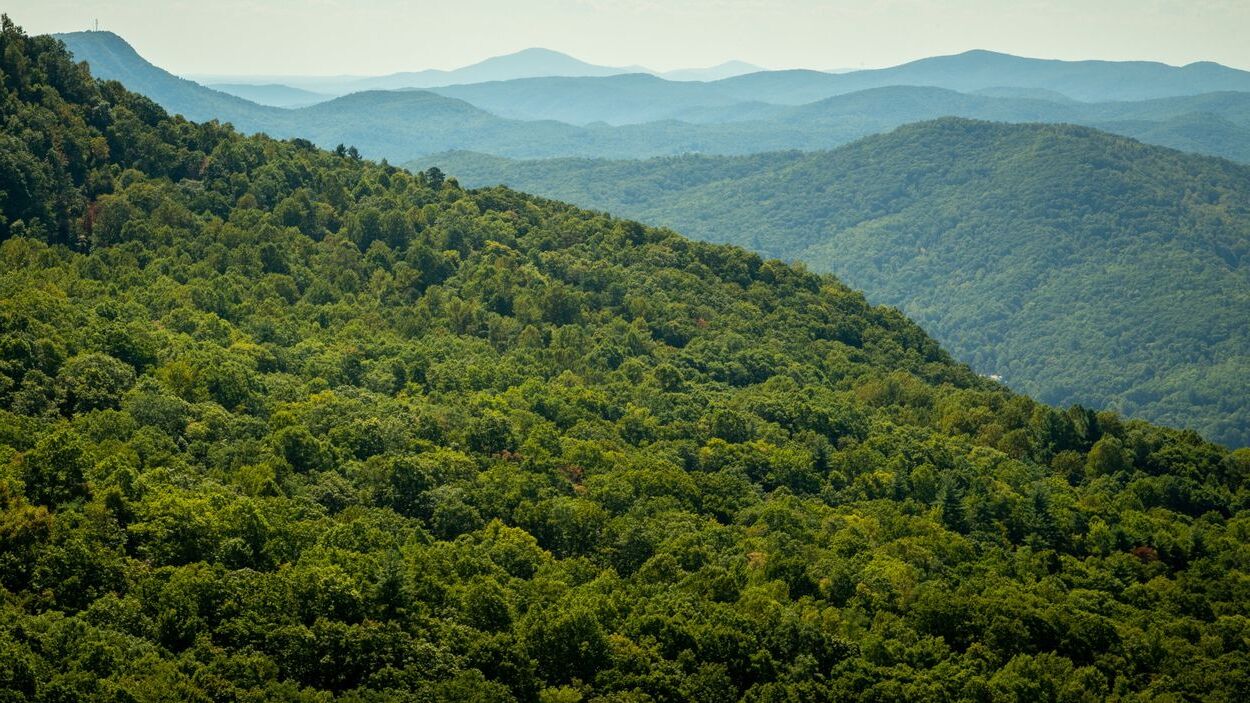Mystery Of The Foxfire Forests

Have you ever heard of foxfire? This natural phenomenon, also known as "fairy fire," occurs when certain fungi emit a soft, eerie glow in the dark. Found in forests around the world, foxfire has fascinated humans for centuries. Imagine walking through a dense forest at night and seeing a mysterious greenish light emanating from decaying wood. It's like stepping into a magical world straight out of a fairy tale. But what causes this enchanting glow? And where can you witness it for yourself? Let's delve into the mystery of foxfire and uncover the secrets behind this captivating natural wonder.
The Enigmatic Glow of Foxfire
Foxfire, also known as "fairy fire," is a natural phenomenon where certain fungi emit a soft, eerie glow. This bioluminescence has fascinated humans for centuries, often leading to tales of magic and mystery. Let's explore some of the most enchanting forests where you can witness this otherworldly light.
1. Great Smoky Mountains, USA
The Great Smoky Mountains, straddling North Carolina and Tennessee, are renowned for their rich biodiversity. Among the many wonders, foxfire is one of the most magical.
Elkmont Ghost Town: This abandoned town within the park is famous for its synchronous fireflies, but the surrounding woods also harbor glowing fungi. Wander the trails at night to see the forest floor light up.
Cades Cove: Known for its scenic beauty and wildlife, Cades Cove offers a chance to spot foxfire along its numerous trails. The best time to visit is during the humid summer months.
2. Aokigahara Forest, Japan
Aokigahara, also known as the Sea of Trees, lies at the northwest base of Mount Fuji. This dense forest is steeped in folklore and mystery, making it a perfect setting for foxfire.
Narusawa Ice Cave: Near the entrance of Aokigahara, this cave is a popular tourist spot. The surrounding forest is home to bioluminescent fungi that glow eerily in the dark.
Fugaku Wind Cave: Another cave in Aokigahara, the Fugaku Wind Cave, offers guided tours. The nearby woods are known for their foxfire, best seen on moonless nights.
3. Waipoua Forest, New Zealand
Waipoua Forest on New Zealand's North Island is famous for its ancient kauri trees. This lush forest also hosts a variety of bioluminescent fungi.
Tane Mahuta: Known as the "Lord of the Forest," Tane Mahuta is the largest kauri tree in New Zealand. The trails around this giant tree are prime spots for spotting foxfire.
Yakas Walk: This walking trail takes you through some of the oldest parts of Waipoua Forest. The damp, mossy environment is perfect for bioluminescent fungi.
4. Daintree Rainforest, Australia
The Daintree Rainforest in Queensland is one of the oldest rainforests in the world. Its unique ecosystem supports a variety of glowing fungi.
Mossman Gorge: A popular destination within the Daintree, Mossman Gorge offers guided night walks. These tours often highlight the bioluminescent fungi that light up the forest floor.
Cape Tribulation: This remote area of the Daintree is known for its pristine beaches and dense forest. The trails here are excellent for spotting foxfire, especially after rain.
5. Black Forest, Germany
The Black Forest in southwestern Germany is a place of legends and fairy tales. Its dense woods are also home to bioluminescent fungi.
Triberg Waterfalls: Near the town of Triberg, these waterfalls are a popular tourist attraction. The surrounding forest is known for its foxfire, which can be seen on quiet, dark nights.
Mummelsee: This small lake in the Black Forest is surrounded by hiking trails. The damp, shaded areas around the lake are ideal for spotting glowing fungi.
6. Olympic National Park, USA
Olympic National Park in Washington State is a diverse landscape of mountains, forests, and coastline. Its temperate rainforests are perfect habitats for bioluminescent fungi.
Hoh Rain Forest: One of the most famous rainforests in the park, the Hoh Rain Forest is a prime location for foxfire. The best time to visit is during the wet season when the fungi are most active.
Quinault Rain Forest: Another lush area within the park, the Quinault Rain Forest offers numerous trails where you can spot foxfire. The damp, mossy environment is ideal for bioluminescent fungi.
7. Sinharaja Forest Reserve, Sri Lanka
Sinharaja Forest Reserve is a UNESCO World Heritage site known for its rich biodiversity. This tropical rainforest is also home to various bioluminescent fungi.
Kudawa Entrance: The main entrance to Sinharaja, Kudawa, offers guided night walks. These tours often highlight the glowing fungi that light up the forest floor.
Pitadeniya Entrance: Another entrance to the reserve, Pitadeniya, provides access to some of the most pristine parts of the forest. The trails here are excellent for spotting foxfire, especially after rain.
The Enchantment of Foxfire Forests
Foxfire forests offer a magical experience unlike any other. These glowing woods, with their bioluminescent fungi, create an otherworldly atmosphere that captivates all who visit. Exploring these forests at night reveals a hidden world of natural wonder. The soft, eerie glow of the fungi provides a unique and unforgettable adventure.
Visiting a foxfire forest is a chance to connect with nature in a new way. It's not just about the glow; it's about the quiet, the mystery, and the beauty of the forest at night. Whether you're a nature lover, a photographer, or just someone looking for a unique experience, foxfire forests are a must-see.
Plan your visit to a foxfire forest and witness the magic for yourself. It's an experience that will stay with you long after you've left the glowing woods behind.

